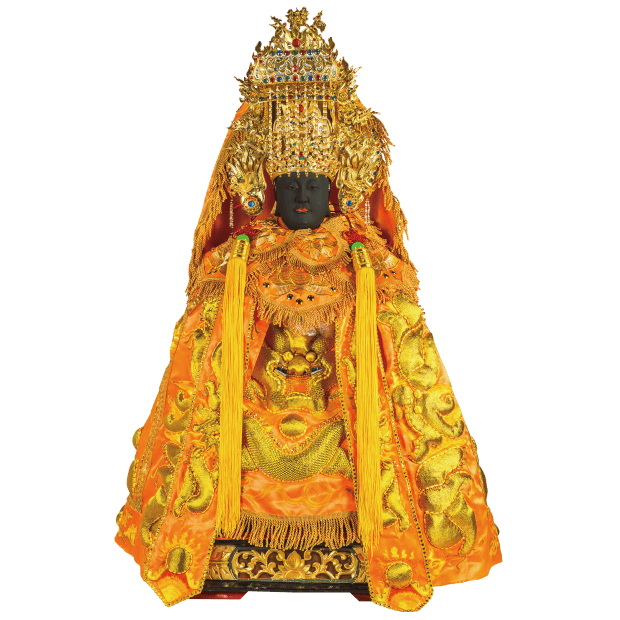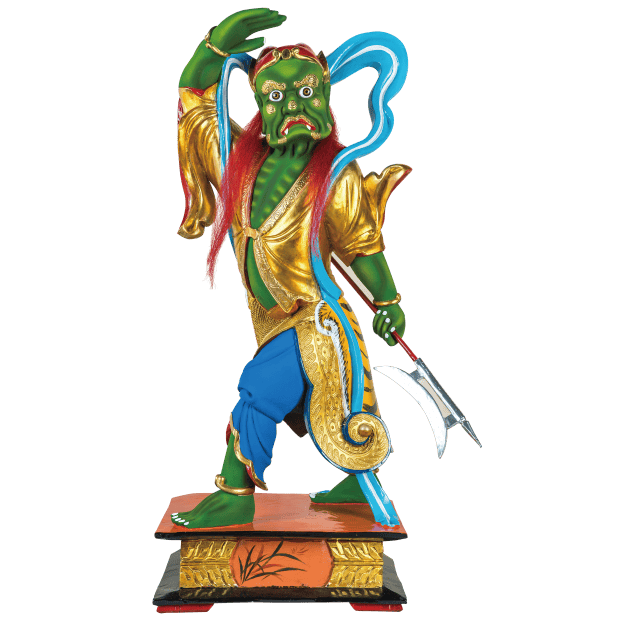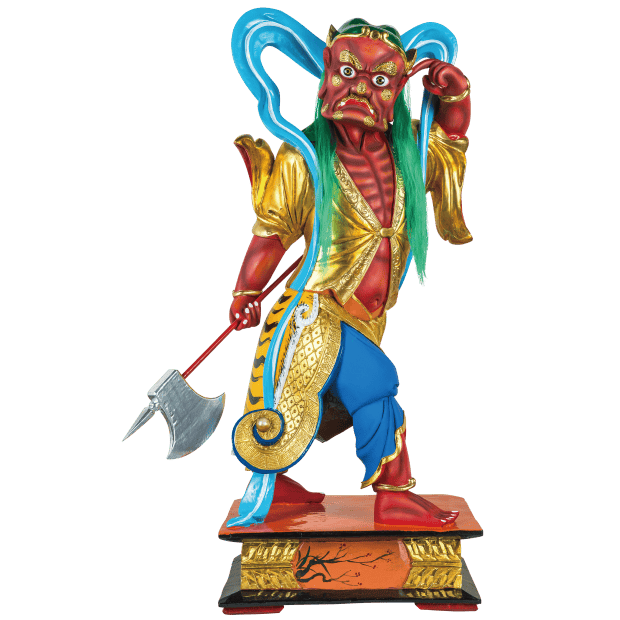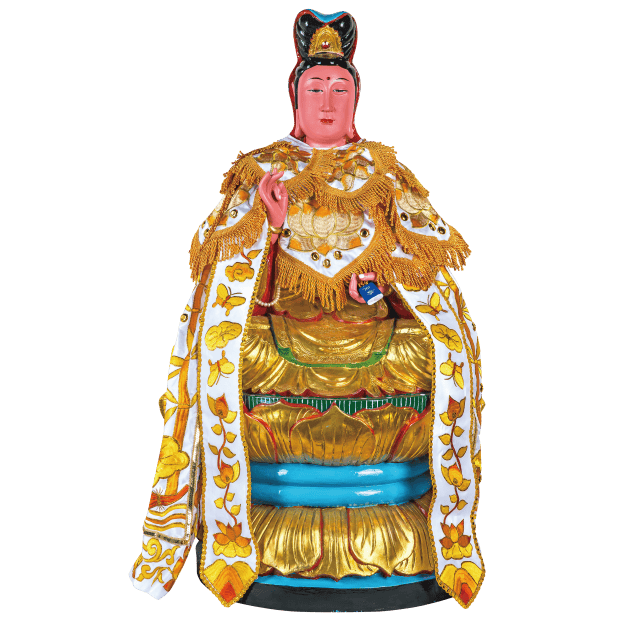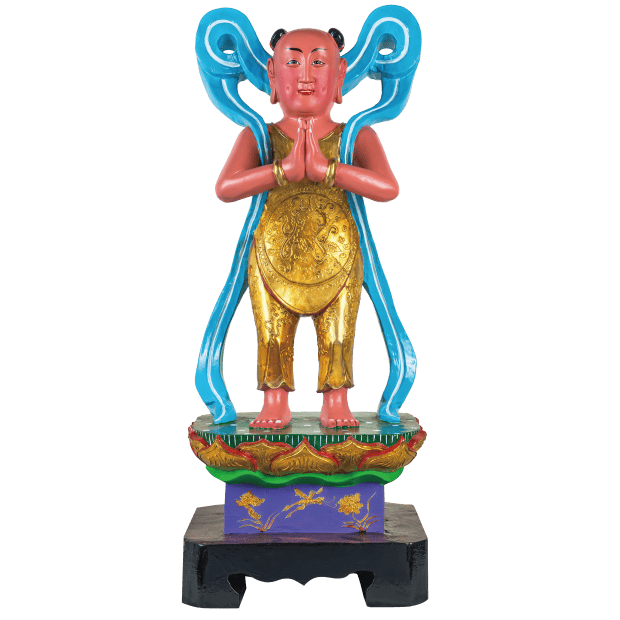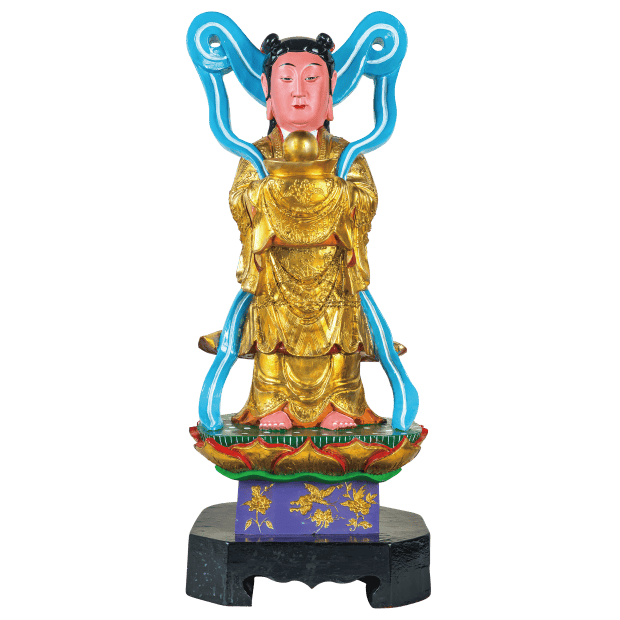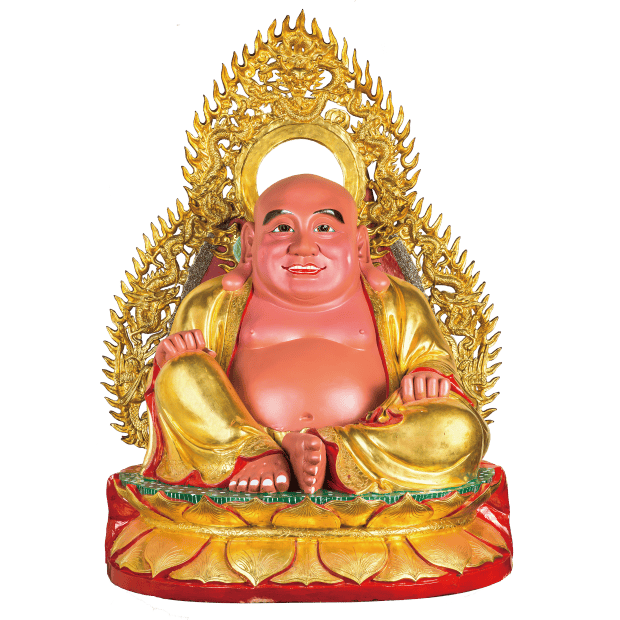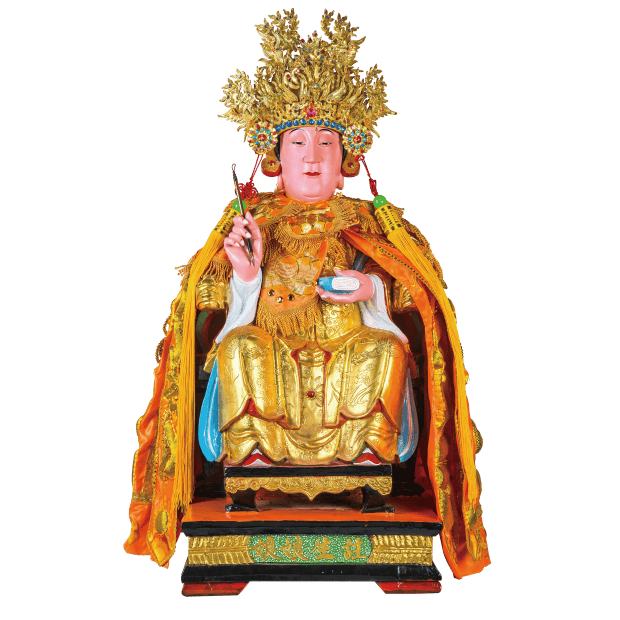All Religion
-
Read More
 Lei Gung (Lord of Thunder)
Lei Gung (Lord of Thunder)Lei Gung (Lord of Thunder)
♦Sacred birth celebrated on 9th day of the 10th lunar month♦
The term Lei Gung originated in the national strategies of the Warring States Period. According to legend, he was the deity in charge of thunder. He is also referred to as “Fenglong,” “Thunder Master,” and “God of Thunder,” or “Lei Gung Jiantianjun.” He is often mentioned with “Dianmu,” the Goddess of Lightning. Lei Gung embodies yang energy so is referred to as “gung.” -
Read More
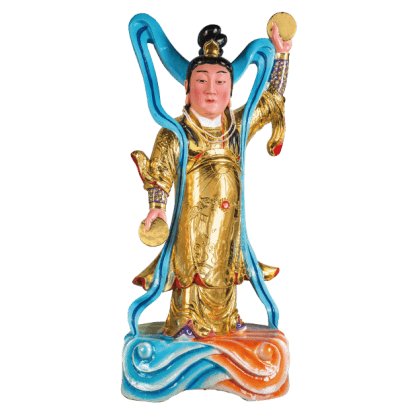 Dianmu
DianmuDianmu
♦Sacred birth celebrated on 9th day of the 10th lunar month♦
Dianmu is the goddess in charge of lightning, and is colloquially known as Mistress of Lightning or Mother of the Golden Light. In early folk beliefs, the Lord of Thunder was also responsible for lightning, hence, the Lord of Thunder is portrayed with eyes like mirrors. Later, the Lord of Thunder and the Father of Lightning divided the responsibilities. By the Han dynasty, there were references to the Father of Lightning. The Father of Lightning became a duo, and the Father of Lightning had become the Mother of Lightning. -
Read More
 Fengbo (Duke of the Wind)
Fengbo (Duke of the Wind)Fengbo (Duke of the Wind)
♦Sacred birth celebrated on the 9th day of the tenth lunar month♦
Fengbo is the deity of the wind. He is one of the seven mansions in the east among the Twenty-Eight Mansions of the Chinese constellations system. As the fourth “Chi” star in the Wenchang (Sagittarius) Constellation, he is responsible for controlling, judging, and allocating wind. He is also called “Duke Chi.” People from the Chu area in the south refer to him as “Feilian”. He is depicted as a divine bird with the body of a deer, and a matter like a leopard. His head resembles the mythical ancient Jue beast with a pair of horns on his head and a snake-like tail. He is adept at raising wind. -
Read More
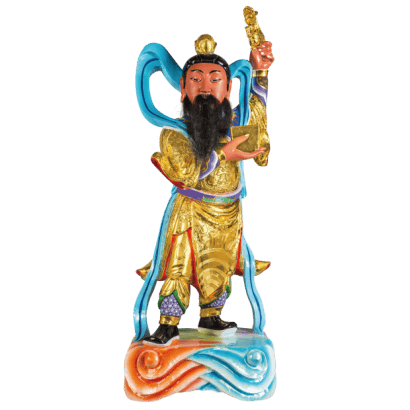 Rain Master
Rain MasterRain Master
♦Sacred birth celebrated on the 9th day of the 10th lunar month ♦
In Daoism, the God of Rain is regarded as a god, a dragon, as the mythical bird Shangyang, or as Master Red Pine (Chisongzi). In the Huitu Sanjiao yuanliu soushen daquan, a Ming Dynasty collection of illustrations of popular deities and immortals, it is written: The Rain Master God is a Shangyang. She Shangyang is a mythical bird, one of its foot is mutable in size. It can drink the oceans dry. He is the God of Rain. In the Jin Dynasty book “In Search of the Sacred (Soushengji): Master Red Pine was a master of rain during the time of the God of Agriculture. In the Ching Dynasty book Jishuo quanzhen, it is written: the raven-bearded strong man holds a vessel in his left hand that contains a dragon, while his right hand gestures to sprinkle water. He is called Heavenly Lord Chen, the Rain Master. -
Read More
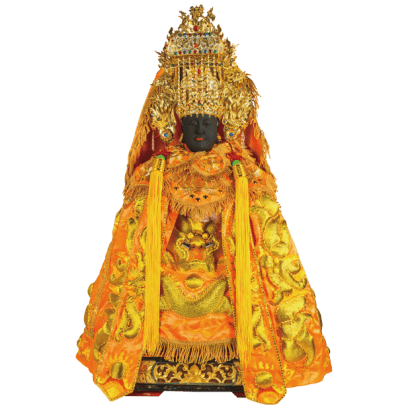 Sacred Mother of Heaven
Sacred Mother of HeavenSacred Mother of Heaven
♦Sacred birth celebrated on the 23rd day of the 3rd lunar month♦
Lin Muo Niang is the secular name of the Sacred Mother of Heaven. A native of Meizhou Island in Putian County, Xinghua Prefecture in Fujian Province, she often revealed her divinity by flying over the seas to save mortals. To memorialize her gracious deeds, the people of Meizhou constructed temples to worship her and honored her with the title “A Woman of Spirituality and Virtue.” In winter of the 25th year of the Emperor Gaozong of Song’s Shaoxing Era, she was given the title of “Lady Chonggu” by imperial decree, and established by later dynasties as imperial consort, heavenly consort, heavenly empress, and the Sacred Mother of Heaven with 24 lives. In many regions in Taiwan, the Sacred Mother is known as “Mazu.” -
Read More
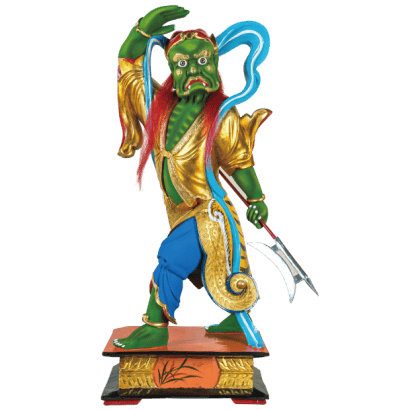 Qianliyan (Thousand-Mile Eyes)
Qianliyan (Thousand-Mile Eyes)Qianliyan (Thousand-Mile Eyes)
♦Sacred birth celebrated on the same day as the Sacred Mother of Heaven ♦
A guardian deity guarding the throne of the Sacred Mother of Heaven, Qianliyan has a blue face, and fangs. He assists Mazu in keeping watch for crises among mortals across great distances. -
Read More
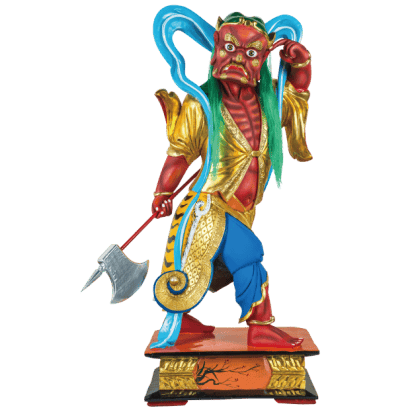 Shunfeng’er (Ears that Listen with the Wind)
Shunfeng’er (Ears that Listen with the Wind)Shunfeng’er (Ears that Listen with the Wind)
♦Sacred birth celebrated on the same day as the Sacred Mother of Heaven♦
A guardian deity guarding the throne of the Sacred Mother of Heaven, Shunfeng’er has a rubicund face and fangs, his ears listen for the pleas from the mortal realm that are carried in the wind. -
Read More
 Guanyin Ancestral Buddha
Guanyin Ancestral BuddhaGuanyin Ancestral Buddha
♦Sacred birth celebrated on the 19th day of the 2nd lunar month♦
Originally named “Guanyin Bodhisattva,” “Guanyin” is the sacred name whole Ancestral Buddha is a folk honorific bestowed on the buddha. Guanyin’s sacred name was originally “Guanshiyin” but the sacred name was shortened during the Tang Dynasty to avoid using the same character shared in the name of Emperor Li Shimin. According to the Mahayana Buddhist Scriptures, some Bodhisattvas had already attained Buddhahood in ancient times. They appear in their Buddha form when they enter the mortal realm to enlighten the people and save them from suffering. Guanshiyin Bodhisattva is among these. Buddhist scriptures describe Guanshiyin Bodhisattva as having a vast compassionate heart. When the name Guanshiyin Bodhisattva is evoked, the Bodhisattva would seek out those who call out to relieve their suffering and help them find joy, hence, people refer to “compassionate and benevolent Guanyshiyin Bodhisattva”, as the most renown of the major buddhas in Buddhism, with the accolade of “in every home Amitabha; in every family Guanshiyin.” -
Read More
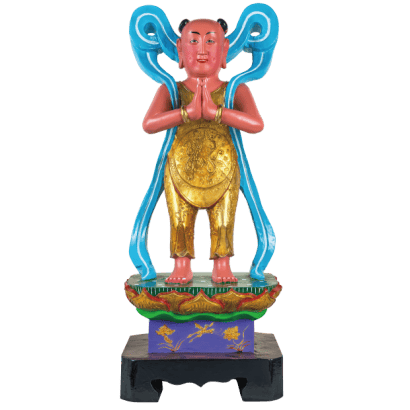 Sudhana (Child of Wealth)
Sudhana (Child of Wealth)Sudhana (Child of Wealth)
♦Sacred birth celebrated on the same day as Guanyin Ancestral Buddha♦
Natural treasures flowed forth when this disciple of the bodhisattva was born, hence he was given this name. He is the protagonist in the work Avataṃsaka Sūtra, and is a radiant exemplar for those practicing the way of the Buddha. After initiating the Anuttara Samak Sambodhi heart, he gradually traveled southward from where Manjusri bodhisattva was, visiting 53 Kalyāṇa-mitra benevolent advisors before completing his spiritual cultivation and entering the Dharma Realm. The smiling boy child who stands next to Guanyin Bodhisattva in the mural of Guanyin in most altar rooms is Sudhana. And on the other side of Guanyin is Dragon Girl ārya. The duo together is referred to as Child of Wealth and Girl of Jade. -
Read More
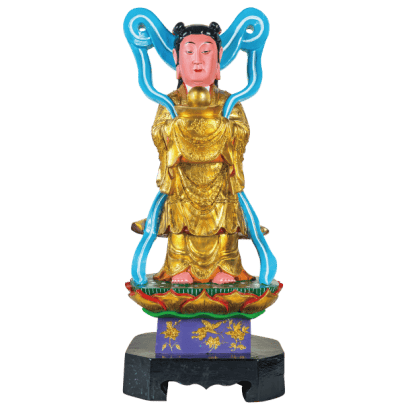 Longnü (Dragon Girl)
Longnü (Dragon Girl)Longnü (Dragon Girl)
♦Sacred birth celebrated on the same day as Guanyin Bodhisattva♦
Originally the daughter of Sāgara the Dragon King, Longnu is an attendant of Guanyin Bodhisattva. She and Sudhana (Child of Wealth) stand on either side of the bodhisattva. In the Devadatta section of the Lotus Sutra, Longnu is said to have achieved dharma by the age of eight. Despite being questioned by the Venerable Shariputra, she still attained Buddhahood at the Dharma Assembly. In order to demonstrate the compassion of Buddhist teachings, and to assist Guanshiyin Bodhisattva in saving sentient beings in the six realms, Longnu appears in the form of a girl child, and along with Sudhana, they are the left- and right-hand attendants of Guanshiyin bodhisattva, and are known collectively as “Golden Boy and Jade Girl.” -
Read More
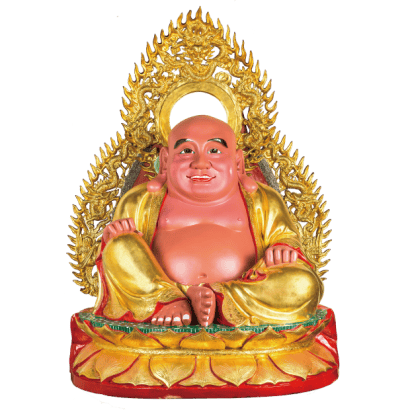 Maitreya Ancestral Buddha
Maitreya Ancestral BuddhaMaitreya Ancestral Buddha
♦Sacred birth celebrated on the 1st day of the 1st lunar month ♦
Maitreya bodhisattva is the “Laughing Buddha” of Buddhism. His family name is Ajitas. Maistreya is his Sanskrit name that is roughly translated as “compassionate.” “Maitreya Bodhisattva” is a “buddha for the future, who resides and leads the heavens. He obsessively observes the world and has entered the mortal realm in disguise. Legends say that during the fifth dynasty, he was incarnated in the form of a monk named Budai (lit. “cloth sack”), referring to himself as “Son of Changting.” It is often said: “Maitreya the true Maitreya has been taken myriad forms, always showing himself to the world yet the world does not recognize him.” -
Read More
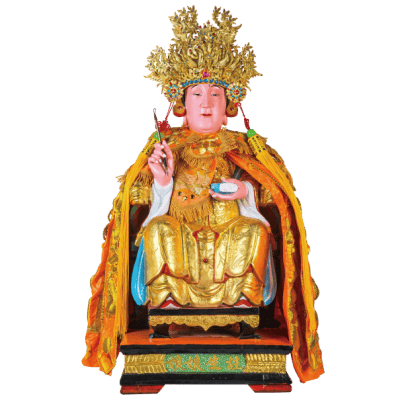 Goddess of Childbirth (Zhusheng Niang Niang)
Goddess of Childbirth (Zhusheng Niang Niang)Goddess of Childbirth (Zhusheng Niang Niang)
♦Sacred birth celebrated on the 12th day of the third lunar month ♦
The Goddess of Childbirth (colloquially referred to as “Mother of Childbirth”) is the deity of fertility as well as the deity who protects pregnant and post-partem women, new born children, and the infertile. She is often depicted as holding a book in her left hand and a brush in the right hand, symbolizing the documentation of offspring in each household and family. As recorded in Investiture of the Gods (Fengshen Yanyi), she was created by three female immortals, Yunxiao, Bixiao, and Qiongxiao, all acolytes of the Sacred Mother of the Turtle Spirit. The Goddess of Childbirth is also known as “The Child-Giving God.” Her 12 female attendants are known as the 12 governesses.





